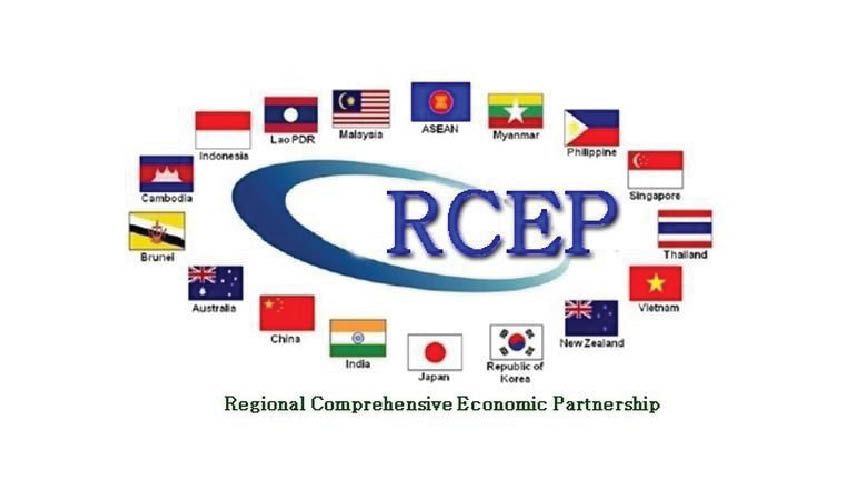The RCEP (Regional Comprehensive Economic Partnership) is an ambitious trade bloc that comprises 16 countries—10 of the ASEAN and six others which includes India and China. And there are expectations that the free trade agreement will create the largest trading block and lift all economies in the region. If only all trade agreements led to such equal distribution of wealth and prosperity. That is very rarely the case and is unlikely to be with RCEP also. Export-led growth is important for India, in fact, crucial for it to get to the Prime Minister’s target of $5 trillion in five years. For years, exports have remained stagnant, and we have seen our traditional areas, for instance textiles, being overtaken by smaller countries like Bangladesh. So India needs an agreement like RCEP, but not at the cost of its own industry being stifled.
Deliberations on RCEP have been going on since 2013 and 27 rounds have been completed, but things are still far from being finalised. And yes, India has concerns. We all know that India runs a trade deficit (TD) against China, but what is equally significant is that we run a whopping $104 billion trade deficit against the entire block, which includes $12 billion against South Korea, $10.6 billion against Indonesia and $3 billion against Thailand. All this suggests a larger pattern that Indian industry is unable to compete against its Asian peers. From steel to textiles to electronics, the pattern largely remains the same.
But before I come to how trade will change if we join the RCEP, I will first explain the nature of the India-China trade.
India exports to China items like fish, spices, tea, coffee, grapes, soya bean, iron, steel and cotton, and is one of the top five exporters in several of these categories. On the other hand, Chinese imports to India are everything from electrical equipment, organic chemicals, plastics, ceramic products, furniture to fertilizers.
But what needs closer attention is how the Chinese are using trade relations for their larger strategic interests. China has allowed duty free access to Pakistan on 311 items—most of these are products that India could be exporting to China including cotton and cotton yarn. As highlighted above, due to the nature of our exports to China, product categories with don’t have super specialisation can be replaced by another country. So while it serves China’s larger geo-political cause, it exposes fault lines in Indian trade—from inability to move up the value chain to possibly needing a more enabling policy framework. Something that may exacerbate in geo-political uncertainty and an FTA—that many believe—essentially will favour China and hurt Indian interests.
Now, let’s come to the fears that Indian industry has, some of which are legitimate, especially since RCEP is a China spearheaded initiative. China now has excess capacity and with a trade war with US, it will need to identify newer markets to “dump” its products. If India slashes duties by more than 80% on over 90% of items without commensurate provisions, the concerns are genuine. The ministries of steel, agriculture and chemicals, and industries such as dairy, aluminium, engineering, pharmaceuticals, leather and food, have all expressed their reservations, even though Commerce Minister Piyush Goyal has assured that India will strictly impose anti-dumping rules in line with global practices, in a bid to allay concerns.
The 2017 NITI Aayog Report gives an insight into how China’s entry into a market adversely changes the scenario. Since the enactment of the ACFTA (ASEAN-China Free Trade Agreement) in 2010, ASEAN-six countries’ value of goods traded with China has swung from a $53 billion surplus to a whopping $54 billion deficit in 2016—in a span of just six years. This is the fear that not just Indian industry but several right-wing organisations like Bhartiya Mazdoor Sangh have.
India’s own experience with FTAs has been far from satisfactory. India signed an FTA with ASEAN and Japan and South Korea in 2010; and had a trade deficit with these countries to the tune of $15.5 billion, which has risen to $42 billion in 2019. What is disturbing is that in nine years, India’s exports have continued to stagnate at 14% of the total trade and imports have risen sharply, hurting Indian interests. To ensure that the proposed FTA does not have the same historical mistakes, bilateral safeguards with trigger mechanisms need to be built in. And for that, India needs to have a separate trade deal with China to ensure RCEP gains do not go disproportionately to Beijing, at the cost of Indian industry.
As mentioned earlier, China is using bilateral trade to further its larger geo-strategic ambitions in the region. India needs to stand its ground, even if it leads to friction in bilateral relations in the short term.
India needs to get to a $5 trillion
Gaurie Dwivedi is a senior journalist covering economy, policy and politics.

